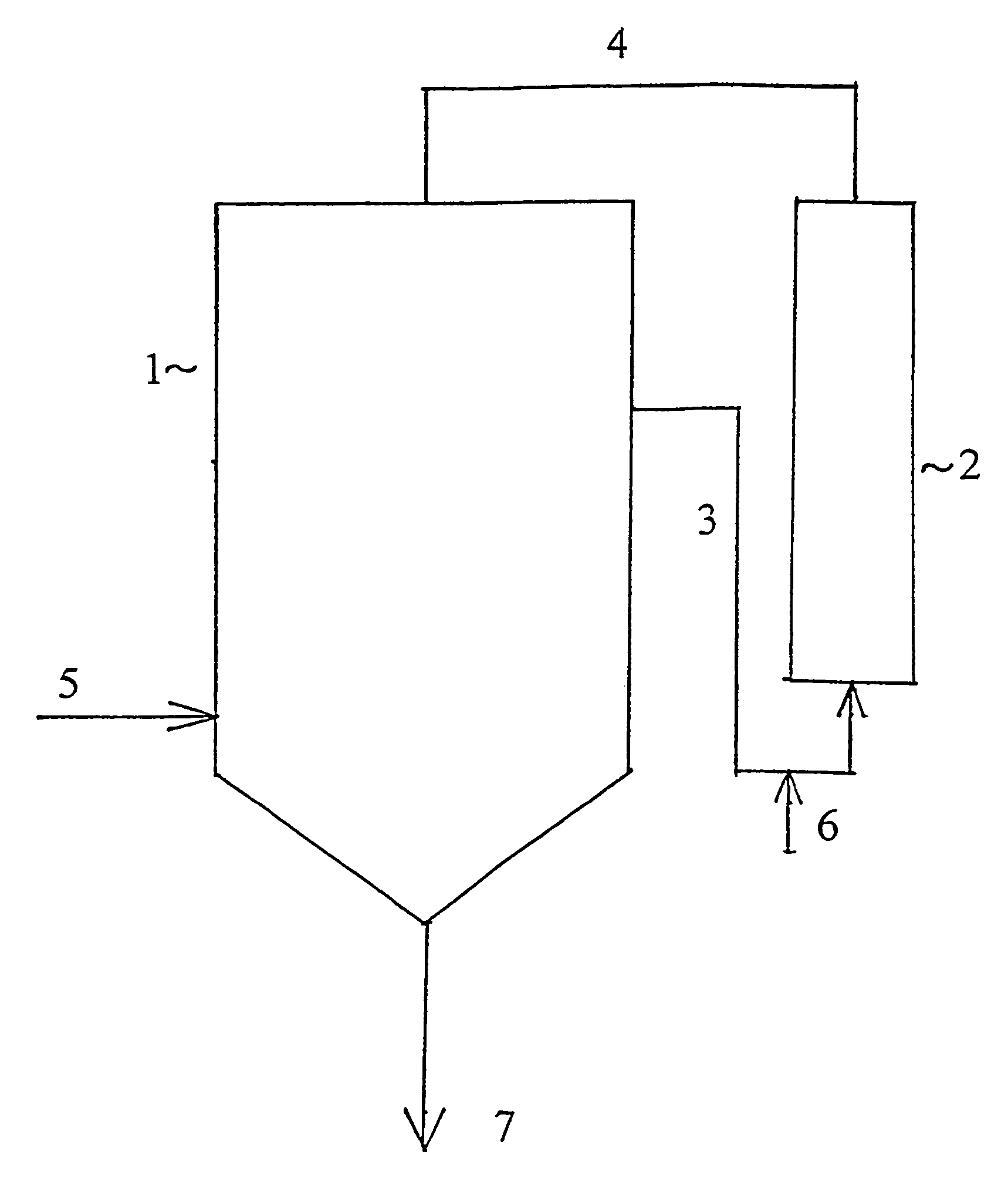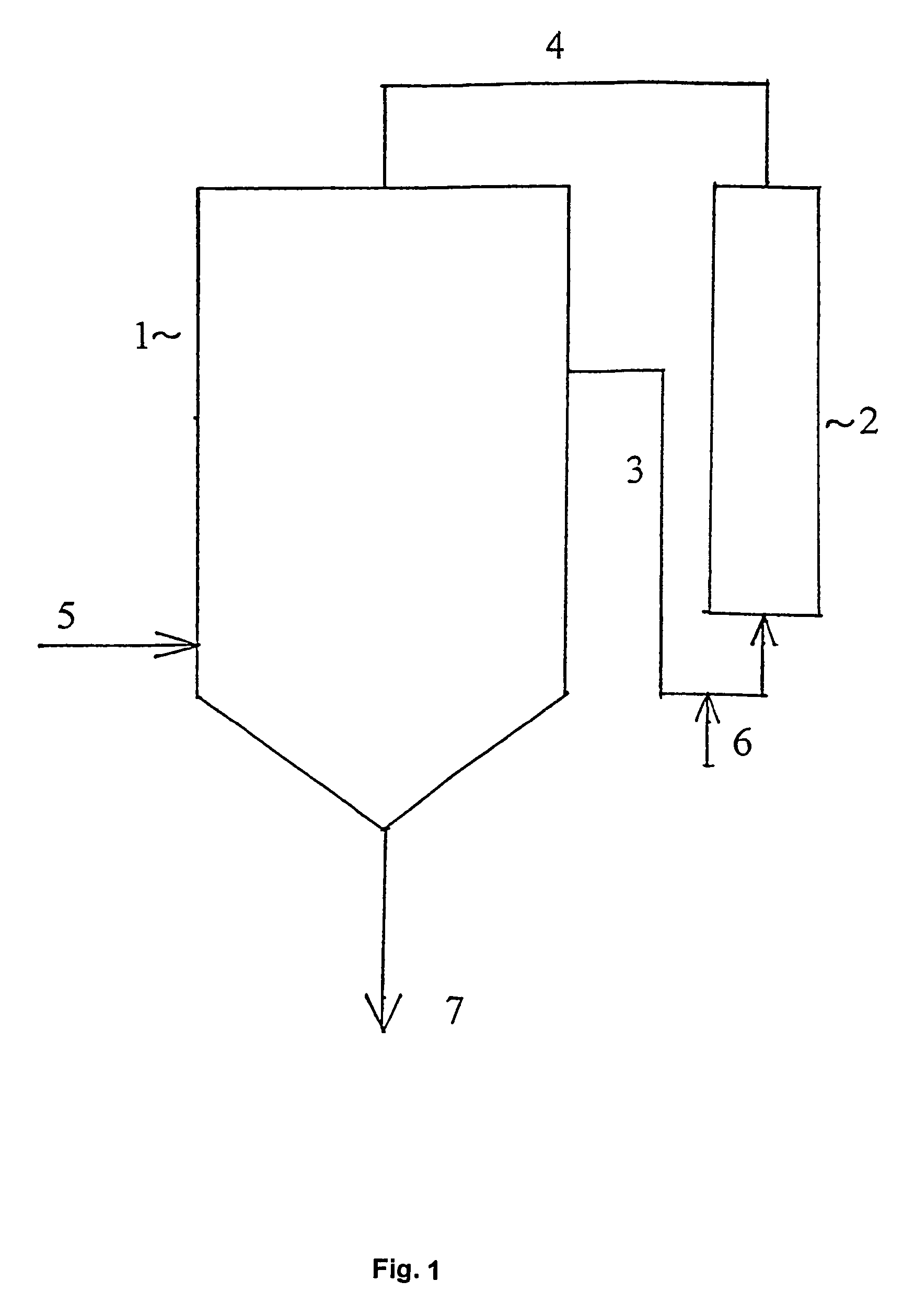Method for transesterifying vegetable oils
a vegetable oil and transesterification technology, applied in the direction of ester-hydroxy reaction, liquid carbonaceous fuel, fatty acid production, etc., can solve the problems of increasing capital and labour investment, unable to achieve full conversion of vegetable oil, and difficult and time-consuming separation of the phase which contains the glycerol by-product, etc., to achieve the effect of reducing the amount of alkanol required in transesterification
- Summary
- Abstract
- Description
- Claims
- Application Information
AI Technical Summary
Benefits of technology
Problems solved by technology
Method used
Image
Examples
example 1
[0041]400 ml of cold pressed sunflower oil (kinematic viscosity at 40° C.: 32 mm2 / s; acid number: 1.2 mg KOH / g), 175 ml of an aliphatic hydrocarbon fraction obtained in mineral oil distillation (boiling range: 75-95° C.; amount of aromatics: less than 1%), and a mixture of 40 ml of glycerol and 5 ml of water were fed into a container fitted with a stirrer, and the contents of the container were stirred for 20 minutes at a rate of 120 rpm. Stirring was stopped, and the contents of the container were allowed to stand for 30 minutes. The separated lower polar phase, which comprises the glycerol, the water and all impurities removed by them, was removed through a discharging unit fitted to the bottom of the container, and the upper apolar phase, comprising 96% of the introduced vegetable oil and aliphatic hydrocarbon solvent, was placed into a four-necked flask equipped with a stirrer, a reflux condenser, a thermometer and a dropping funnel. Sample was taken from the upper apolar phase...
example 2
[0045]The procedure of Example 1 was followed with the difference that after both transesterification steps, the biphasic mixture was passed through 15 g of an anion-exchange resin in order to accelerate phase separation. Thus the time required for full separation of the phases (indicated by full transparency of the upper phase) decreased for Step 1 to 8 minutes and for Step 2 to 48 minutes. Upon this operation, the acid number of the biodiesel phase also decreased to 0.1 mg KOH / g. Kinematic viscosity of the biodiesel phase obtained in Step 2 was 4.46 mm2 / s (measured at 40° C.). Its density was 0.880 g / cm3 (measured at 20°), which, compared with the respective data of Table 1, indicates that, regarding the characteristics decisive from the aspects of usability, biodiesel fuel may be prepared by the method of the invention in a steady quality.
example 3
[0046]One boring each was formed on the bottom and on the middle of the sidewall of a three-necked flask of 2 liters capacity, and pipelines for material supply, equipped with a closing valve, were fitted to the individual borings. A collector flask was placed below the pipeline fitted to the boring on the bottom. A tube equipped with a heating jacket was joined through a centrifugal pump to the pipeline fitted to the boring on the sidewall, and the tube was filled with 25 g of anion exchange resin. A pipeline was joined to the upper end of the tube, which was connected to one of the necks of the flask. Thus the assembly shown in FIG. 1, comprising a receiver 1 and a static mixer 2 connected thereto as a bypass, was formed. The flask was fitted with a thermometer and a reflux condenser. 1100 ml of a mixture of refined sunflower oil and aliphatic hydrocarbon solvent, obtained as described in Example 1, and a solution of 4 g of potassium hydroxide in 250 ml of methanol were filled int...
PUM
| Property | Measurement | Unit |
|---|---|---|
| boiling point | aaaaa | aaaaa |
| boiling point | aaaaa | aaaaa |
| boiling point | aaaaa | aaaaa |
Abstract
Description
Claims
Application Information
 Login to View More
Login to View More - R&D
- Intellectual Property
- Life Sciences
- Materials
- Tech Scout
- Unparalleled Data Quality
- Higher Quality Content
- 60% Fewer Hallucinations
Browse by: Latest US Patents, China's latest patents, Technical Efficacy Thesaurus, Application Domain, Technology Topic, Popular Technical Reports.
© 2025 PatSnap. All rights reserved.Legal|Privacy policy|Modern Slavery Act Transparency Statement|Sitemap|About US| Contact US: help@patsnap.com



